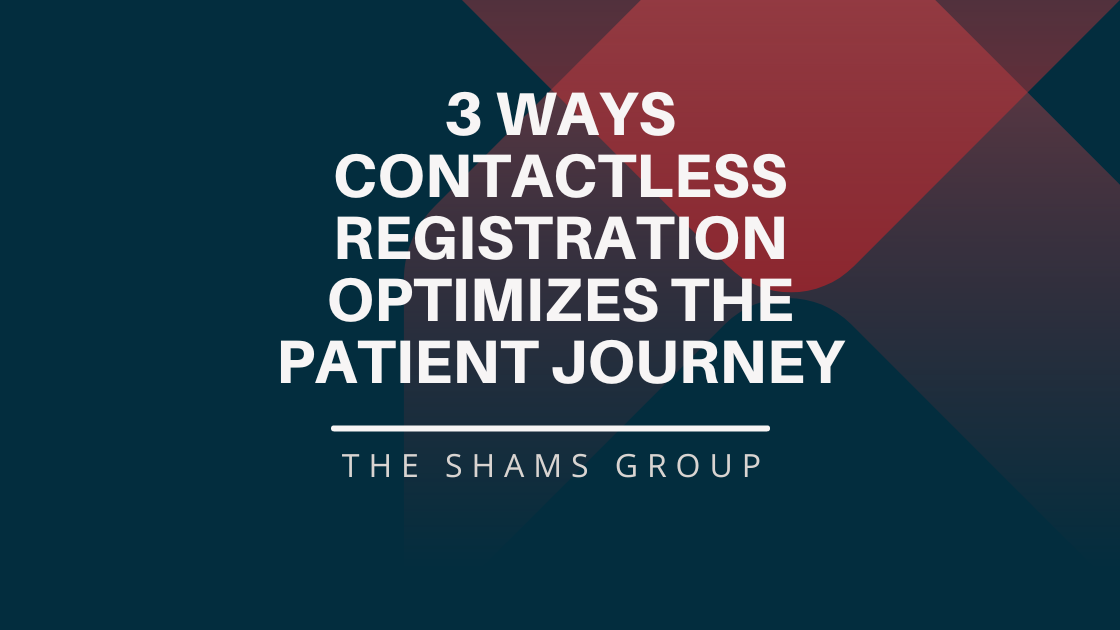3 Ways Contactless Registration
Optimizes the Patient Journey
The COVID-19 outbreak pushed patient intake strategies into the spotlight. As a result, many healthcare organizations have considered adopting some form of contactless intake at their facilities. Contactless solutions come in many forms that can influence patients in a variety of ways throughout the care journey. To name a few, contactless solutions may change how patients register, check-in, or make payments, and they can even alter how or whether or not patients visit the hospital at all (thanks to virtual care). Yet, one contactless solution stands out as most viable for the contactless healthcare organization of the post-COVID pandemic era, and that solution is contactless patient registration.
Here’s three ways contactless registration optimizes the patient journey.
1. Contactless Patient Registration Eliminates Patient Inconvenience #1
Under normal circumstances, the first inconvenience many patients face when visiting the hospital is the registration process. They approach the admissions desk, wait in line, and receive a packet of registration forms. They sit and fill out those forms, sometimes being required to relay the same information reported during previous visits, and eventually return to the admissions desk with probable accompanying line. This is the traditional intake process, and patients have learned to deal with its inefficiencies. But, as many in the healthcare industry have already begun to experience, expectations are changing.
With contactless registration, patients can bypass long lines, long wait-times, and those daunting registration packets. They can choose to complete registration outside of a waiting room, in an area they feel more comfortable and in a manner that saves them time and limits face-to-face interaction. This remedies the first inconvenience on their care journey, and not just on this visit, but on every visit thereafter. The first impression such patients have about an organization providing such convenience is bound to be more memorable and pleasant than would have been possible otherwise.
2. Contactless Patient Registration Enables Digital Payment Methods
For Starbucks, digital payment methods were a revenue cycle godsend during the pandemic. Even though it had reported losing approximately 1.2 billion in sales because of reduced hours and closures, its actual earnings toward the end of last year exceeded quarterly projections because customers had the ability to order through the Starbucks app. Here’s a question for healthcare executives: What can the healthcare industry learn from this shocking reality?
Perhaps this: digital payment methods are what consumers turn to when face-to-face interaction is not desired, and any healthcare organization that does not have this offering may already be missing out on compensation. Some contactless patient registration solutions set the stage for a healthier revenue cycle by offering digital payment options within patient workflows, but verifying this functionality beforehand is advisable. With the right contactless solution, organizations have the opportunity to offer more payment options to patients and improve co-pay collection rates – a needle many health systems have long struggled to move.
3. Contactless Patient Registration is a Versatile Digital Solution
Contactless healthcare was an evolution of healthcare processes necessary to minimize the spread of COVID-19. However, some may wonder what lasting benefits will remain once the pandemic is over. This wondering can be addressed by answering one question: how versatile is the contactless registration solution that was implemented?
Aside from supporting pandemic-resiliency, contactless patient intake solutions should also be viable for everyday use and non-infectious patient care. And this versatility should allow them to be easily repositioned as digital patient engagement tools once the pandemic is over, providing patients with the ability to register through mobile means, reduce wait times, and avoid duplicative registration work in perpetuity. Thus, the benefits of contactless patient registration are here to stay, as no-contact-focused intake methods inevitably transform into the digital-first-focused intake processes that will characterize the new patient journey.
You Might Also Like:
Share..







